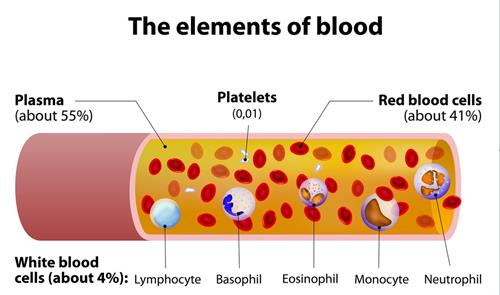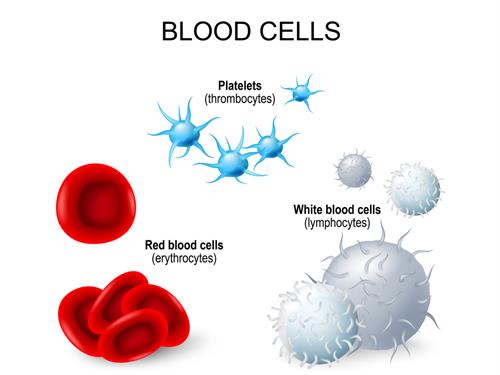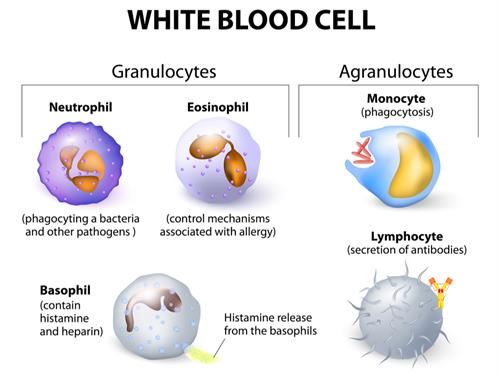
PUMPA - SMART LEARNING
எங்கள் ஆசிரியர்களுடன் 1-ஆன்-1 ஆலோசனை நேரத்தைப் பெறுங்கள். டாப்பர் ஆவதற்கு நாங்கள் பயிற்சி அளிப்போம்
Book Free DemoWhat are the main characteristics of connective tissue?
- It arises from the mesoderm of the embryo.
- It has elements such as matrix, fibres and cells.
There is a connective tissue that is in the form of fluid and has the above-mentioned characteristics.
- It also arises from the mesoderm of the embryo.
- It has a non-living fluid matrix called plasma.
- It has soluble protein molecules as fibres.
- It also has different types of cells.
Hence this tissue is called fluid connective tissue. We call it "blood".
Blood - a liquid connective tissue:
It is a fluid connective tissue that connects various parts of the body. It helps to maintain the continuity of the body. It contains a liquid matrix called plasma, blood cells like RBCs (Red blood corpuscles), WBCs (White blood corpuscles) and platelets suspended in it. Plasma is a pale yellow colour fluid. It contains proteins, water, salt and enzymes.
- It transports nutritive materials, gases, vitamins and hormones to tissues present all around the body.
- It carries waste products from tissues to excretory organs like the liver and kidney.
- It also conducts heat and maintains the body temperature.
Blood has mainly two components,
- Blood plasma
- Blood corpuscles

Blood and its components
Blood plasma:
- It is a transparent, clear fluid with pale yellow colour.
- It contributes 55-60% of blood and has 90-92% of water.
- Apart from water, it has inorganic salts such as sodium, potassium, magnesium and calcium.
Blood corpuscles:
Blood cells or corpuscles are one of the elements of the blood. It contributes 40-45% of blood and is heavier than plasma.
It is of three types.
- Red blood corpuscles or erythrocytes
- White blood corpuscles or leukocytes
- Blood platelets or thrombocytes

Types of blood cells
1. Red blood corpuscles:
- The life span of RBC is 120 days.
- Mature RBC do not contain a nucleus.
- Most of the cell organelles like mitochondria and lysosomes are absent in these cells.
- The shape of the RBC is known to be a biconcave disc.
- Red blood cells, also termed erythrocytes, play a critical role in transporting gases such as oxygen from the lungs. They also aid in carbon dioxide transport from tissues to the lungs.
Important!
Note:
- In humans, RBCs are smaller than WBCs. RBCs are 7.2 µm in diameter.
- Per cubic mm of blood contains about 5.5 and 4.5 million RBCs for a normal adult man and woman, respectively.
- A decrease in RBC count results in a condition called anaemia.
- An increase in RBC count results in a condition called polycythemia.
2. White blood corpuscles:
- It is colourless.
- It is irregular in shape.
- The life span of WBC is 13 to 20 days.
- WBCs are also called leucocytes.
- WBC contain nucleus and cell organelles like ER, golgi apparatus and mitochondria.
- WBCs are larger than RBCs but smaller in number.
- Per cubic mm of blood contains 5000 to 9000 WBCs are present in human.
- There are five different types of cells (WBC) are there. i.e. monocytes, lymphocytes, neutrophils, basophils and eosinophils.

Different types of white blood cells
Leucocytes are of two types:
A. Granulocytes (with granules in the cytoplasm)
B. Agranulocytes (without granules in the cytoplasm)
A. Granulocytes:
They have irregularly shaped nuclei and small cytoplasmic granules. The specific types of granulocytes are basophils, neutrophils and eosinophils.
a. Eosinophils:
- It makes 1-2% of total leucocytes count, i.e., 70-300 cells per cubic mm of blood.
- It has a bi-lobed nucleus.
- Granules of these cells are the largest among all components of leucocytes.
Function: It plays an essential role in immunity, allergy and hypersensitive reactions.
b. Basophils:
- It makes 0.5-2.7% of leucocytes count. i.e., 35-150 cells per cubic mm of blood.
- It has an S-shaped nucleus with two or three lobes.
- It constitutes the mast cells which consists of heparin and histamine.
- It is the least component present in leucocytes based on count.
c. Neutrophils:
- It makes 60 - 70% of total leucocytes. i.e., 4000-5000 cells per cubic mm of blood.
- It has two to five-lobed nucleus.
- Granules of these cells are the smallest among all components of leucocytes.
- It is the highest component present in leucocytes based on count.
B. Agranulocytes:
They do not have distinct cytoplasmic granules. The specific types of agranulocytes are lymphocytes and monocytes.
a. Lymphocytes: It has a spherical cell and less motile.
Function: Responsible for the production of antibodies.
b. Monocytes: It is the largest white blood cell and has a large nucleus indented on one side (horse-shoe shaped). Cells are actively motile and phagocytic.
Function: White blood cells are a major part of the immune system, helping the body fight against disease-causing pathogens by producing antibodies.
Important!
Do you know!
- A decrease in WBC count in the blood creates a condition called leukopenia.
- An increase in WBC count in the blood creates a condition called leukaemia (cancer of the blood).
- Monocytes are the largest cell of white blood cell, while lymphocytes are the smallest.